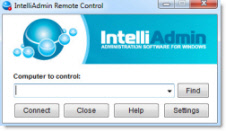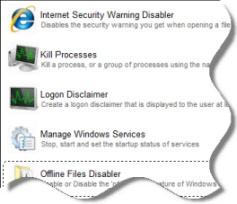SCCM PXE and DHCP Related Query
Hi
We are setting up SCCM for one of our client. While the deployment we are at the point of configuring SCCM PXE so as
per the following articles, we’ve asked the client to configure options 60, 66, & 67 on the Router rather than configuring them on DHCP Server – In our case the SCCM PXE and DHCP Server are on different machines and clients are in different
subnet than PXE and DHXP:
1.
PXE clients computers do not start when you configure the Dynamic Host Configuration Protocol server to use options 60, 66, 67
http://support.microsoft.com/kb/259670
2.
Managing Network Boot Programs
http://technet.microsoft.com/en-us/library/cc732351(WS.10).aspx#Using
Refer section “Using DHCP Options 60, 66, and 67”
But the customer is insisting to do that configuration on DHCP Server as this saves them a lot of effort in doing configuration
at different routers (various locations where SCCM clients are located). We’ve explained them that it is against recommendations but unable to convince.
So need to know the process that actually happens when a PXE enable client boots and requests for IP Address as well
as Boot Server and Boot File information, to list down my queries:
1.
Is there a difference in the process of getting this information when
a. DHCP and PXE are co-located and b. when they are located on different machines?
2.
When DHCP and PXE are located on different machines, what are the steps (Flow of packets) it takes to get the IP and Boot Server and Boot File information?
3.
What exactly does the option 60 means, I’ve read some articles that pointed me that “The DHCP offer can be splitted into two independent packages,
coming from different servers. The DHCP
server can send out the DHCP offer containing the clients IP address and the PXE server can send out the DHCP offer containing the option 60”.
This means that the client receives the answer from a SCCM PXE using Option 60 informing him about which server is PXE – If this is the case why we need Options 66 & 67?
4.
There’s no such option is Microsoft DHCP Server to configure option 60, so where do we need to configure it if in case we decide to go with configuration
on this option in DCHP Server rather on Router’s IP Helper Table?
Struggling to find out the answers to these questions, looking for a quick response
Regardszamn
April 8th, 2011 3:33pm
Don't use the DHCP options. Use IPHelpers on the routers instead. If you add those everything just works.
John Marcum | http://myitforum.com/cs2/blogs/jmarcum/|
Free Windows Admin Tool Kit Click here and download it now
April 8th, 2011 3:49pm
I concur with John. IPHelpers are the recommended method to use by Microsoft for PXE.
When you say put the DHCP options on the router, do you mean moving DHCP to the router?Jason | http://myitforum.com/cs2/blogs/jsandys | Twitter @JasonSandys
April 8th, 2011 4:25pm
Thanks John for the response.
Jason, I mean to say go with IP Helper configuration rather using DHCP Option on DHCP Server.
Hope to see answers to other questions I posted.
zamn
Free Windows Admin Tool Kit Click here and download it now
April 8th, 2011 6:59pm
this blog post explains a lot for you:
http://blogs.technet.com/b/oob/archive/2011/01/05/troubleshooting-the-pxe-service-point-and-wds-in-configuration-manager-2007.aspxDon
April 8th, 2011 10:15pm
this blog post explains a lot for you:
http://blogs.technet.com/b/oob/archive/2011/01/05/troubleshooting-the-pxe-service-point-and-wds-in-configuration-manager-2007.aspxDon
Free Windows Admin Tool Kit Click here and download it now
April 9th, 2011 5:13am
this blog post explains a lot for you:
http://blogs.technet.com/b/oob/archive/2011/01/05/troubleshooting-the-pxe-service-point-and-wds-in-configuration-manager-2007.aspxDon
April 9th, 2011 5:13am
Hi Testgroup
I've already gone through this article but I am specifically looking for answers to these questions:
1. When DHCP and PXE are located on different machines, what are the steps (Flow of packets) it takes to get the IP and Boot Server and Boot File information?
2. There’s no such option is Microsoft DHCP Server to configure option 60, so where do we need to configure it if in case we decide to go with configuration on this option
in DCHP Server rather on Router’s IP Helper Table?
3. Also, in our lab environment (prepared to simulate exact production one) we configured Options 66 & 67 on our DHCP (located separately from PXE SP), as I
said there's no option to set Option 60 on Microsoft's DHCP Server - there our OSD tesing went successful. I am sure that we did not configured IP Helper in our POC. Does this means that OSD works without setting either DHCP Opton 60 or IP Helper?
Regards
zamn
Free Windows Admin Tool Kit Click here and download it now
April 9th, 2011 8:38am
1. This depends on if you are using IPHelpers or not. This Wiki article is pretty good:
http://en.wikipedia.org/wiki/Preboot_Execution_Environment.
2. There is no way to set option 60. Option 60 is vendor specific option that is used by Microsoft when you have both a PXE server and DHCP server on the same system; this essentially configures the DHCP server to also answer the broadcasts for the
PXE server. DHCP and PXE use the same protocol, BOOTP, and clients find PXE servers the exact same way as they find DHCP servers: via a network broadcast. Because they use the same protocol and listen on the same ports, co-existing on the same system would
be impossible without this type of configuration.
3. Using the DHCP options is mutually exclusive from using IP Helpers. It's one or the other.
Here's a decent description of the PXE process:
http://technet.microsoft.com/en-us/library/cc978282.aspx.
Here's an excllent article with many more details:
http://technet.microsoft.com/en-us/magazine/2008.07.desktopfiles.aspx?pr=blog.Jason | http://myitforum.com/cs2/blogs/jsandys | Twitter @JasonSandys
April 9th, 2011 3:53pm
Thanks Jason for pointing me to such great articles.
One thing that still confuses me is, what exactly we mean with configuring IP Helper or what do we configure in IP Helper? is there a article describing what is to be configured in IP Helper table of a router.
Regards
zamn
Free Windows Admin Tool Kit Click here and download it now
April 9th, 2011 11:15pm
protocols/services such as DHCP are broadcast in nature, hence they do not cross routers.
routers can be configured with an interface setting (such as Cisco's ip-helper), which performs a "forwarding" or "proxying" function.
configuring ip-helper on a Cisco router interface (the i/f facing your clients), to forward to the IP address of a DHCP server on another network/interface.
this permits you to avoid building a DHCP server on each and every subnet/VLAN.
checkout:
http://www.ciscopress.com/articles/article.asp?p=330807&seqNum=9
Don
April 10th, 2011 5:07am
Very good description from Don.
One thing to point out (if you hadn't put this together) is that everything Don said above for iphelpers and DHCP also goes for iphelpers and PXE because they use the same protocol: BOOTP. To the layer 3 device, there is no difference. Thus, in most
networks, you will actually have two iphelpers set up, one to direct BOOTP broadcasts to a DHCP server and one to direct BOOTP broadcasts to the PXE server. The PXE server will not respond to BOOTP traffic meant to get an IP address and vice-versa based on
a special option in the BOOTP request (the wiki article I linked above describes this).Jason | http://myitforum.com/cs2/blogs/jsandys | Twitter @JasonSandys
Free Windows Admin Tool Kit Click here and download it now
April 10th, 2011 10:14am
protocols/services such as DHCP are broadcast in nature, hence they do not cross routers.
routers can be configured with an interface setting (such as Cisco's ip-helper), which performs a "forwarding" or "proxying" function.
configuring ip-helper on a Cisco router interface (the i/f facing your clients), to forward to the IP address of a DHCP server on another network/interface.
this permits you to avoid building a DHCP server on each and every subnet/VLAN.
checkout:
http://www.ciscopress.com/articles/article.asp?p=330807&seqNum=9
Don
April 10th, 2011 12:03pm
protocols/services such as DHCP are broadcast in nature, hence they do not cross routers.
routers can be configured with an interface setting (such as Cisco's ip-helper), which performs a "forwarding" or "proxying" function.
configuring ip-helper on a Cisco router interface (the i/f facing your clients), to forward to the IP address of a DHCP server on another network/interface.
this permits you to avoid building a DHCP server on each and every subnet/VLAN.
checkout:
http://www.ciscopress.com/articles/article.asp?p=330807&seqNum=9
Don
Free Windows Admin Tool Kit Click here and download it now
April 10th, 2011 12:03pm
Thanks everyone for all the support, gr8 information.
zamn
April 14th, 2011 10:55pm


